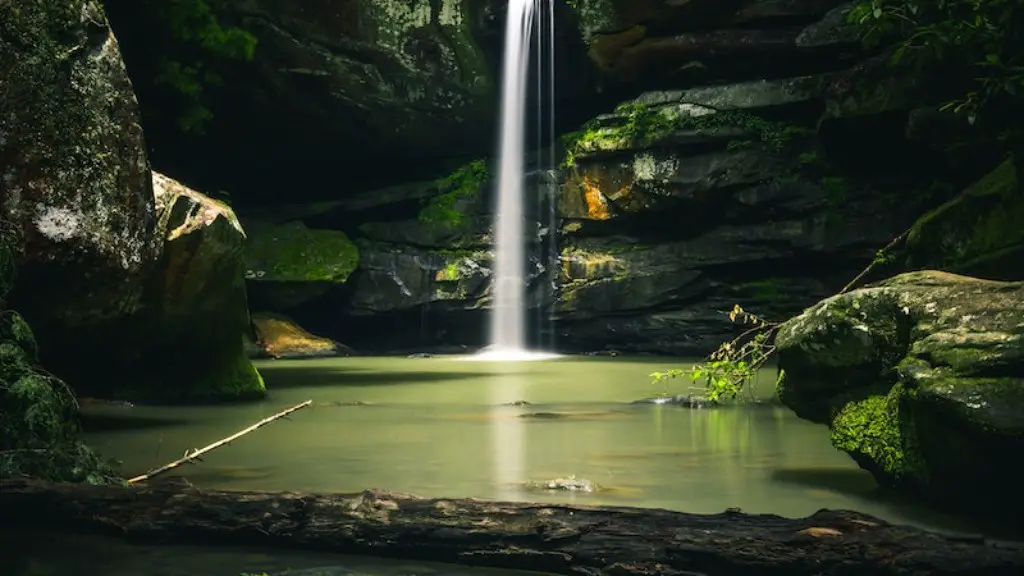Overview
The Yangtze River is the longest river in Asia and the third-longest river in the world. It is known as the ‘mother river’ and plays a major role in the geography, culture, and economy of China and other countries in the region. In recent years, however, the Yangtze has been subject to serious pollution-causing agents, resulting in a number of negative environmental, economic and health effects. In this article, we will explore the various causes of pollution in the Yangtze River and provide insight into the current efforts to protect this vital resource.
Causes of Pollution
The primary causes of pollution in the Yangtze River are industrial and agricultural activities. The expansion of industrialization in the area has led to an increase in the number and complexity of pollutants discharged into the river. These pollutants include toxic chemicals and heavy metals, as well as persistent organic pollutants that are more difficult to remove from the environment.
Agricultural activities can also contribute to the problem by washing agricultural run-off (such as fertilizers and pesticides) into the river. This can cause an increase in the levels of nutrients and other pollutants, resulting in the growth of algae blooms and other aquatic life, which can have a negative effect on the water quality and the biodiversity of the river.
Effects of Pollution
The pollution of the Yangtze River has had a number of far-reaching consequences for the environment and people in the region. In addition to reducing water quality and depleting biodiversity, pollution of the river has been linked to the emergence of diseases such as cholera, typhoid fever, and dysentery. Pollution has also affected livelihoods; the popularity of the river as a source of fishing and other activities has been greatly diminished due to pollution, resulting in a loss of income for many people.
Efforts To Protect the Yangtze
In recent years, the Chinese government has undertaken various initiatives to reduce the levels of pollution in the Yangtze River and improve the water quality. These include the implementation of strict regulations governing the discharge of pollutants, the implementation of advanced wastewater treatment technologies, and the development of projects aimed at restoring wetlands and other areas of the river.
The Chinese government has also established the Three Gorges Dam, a hydroelectric dam which is the world’s largest. The dam has been built for a number of purposes, including flood control, hydroelectric power generation, and water quality improvements.
Public Cooperation
In addition to government initiatives, public cooperation is also necessary for the successful protection of the Yangtze River. Various advocacy organizations have emerged in recent years to promote public awareness about the challenges facing the river, and to encourage individuals and organizations to take action to reduce their impact on the environment.
Individuals can also make a difference by engaging in activities such as reducing their water consumption and disposing of hazardous waste responsibly.
Looking Forward
In order to improve the state of the Yangtze River in the long-term, it is essential that the Chinese government continue to invest in sustainably managing the river. This should include ongoing efforts to reduce pollution, restore habitats, and protect vulnerable aquatic species.
The Chinese government has made significant investments in recent years, and it is hoped that these efforts will be sustained and expanded in the years to come. It is also important for people in the region to take responsibility for preserving the environment, by reducing their own pollution and supporting initiatives to ensure the protection of the Yangtze River.
Environmental Impact
The pollution of the Yangtze River has had a profound effect on the environment in the region. In addition to reducing water quality and depleting biodiversity, pollution of the river has disrupted natural habitats and caused changes in the landscape.
The most significant environmental impact of the pollution of the Yangtze River is the disruption of ecosystems along its banks. Aquatic species have been adversely affected, resulting in a decrease in the amount of fish and other organisms available for consumption. The pollution of the river has also caused soil erosion and increased sedimentation, resulting in further changes to habitats and ecosystems.
Economic Implications
The pollution of the Yangtze River has had serious economic consequences for the region. Industries that rely on the river for resources or transportation have been adversely affected by the decline in water quality and have had to invest in technologies and measures to protect their operations.
In addition, the pollution of the river has reduced its appeal as a recreational destination, leading to a decline in visitor numbers and resulting in a loss of income for tourism-related businesses.
International Responsibility
The pollution of the Yangtze River has broader implications for the global environment, as pollutants from the river can be transported by ocean currents and wind to other parts of the world. This means that all countries have a responsibility to act in order to reduce the environmental impact of the river’s pollution. Therefore, countries should work together to develop strategies and initiatives to protect the Yangtze River and the environment of the region.
Conclusion
The pollution of the Yangtze River is a major issue that needs to be addressed if the environment of the region is to be preserved and improved. Governments, businesses and individuals must all take responsibility for reducing their impact on the environment, and for supporting initiatives to protect the Yangtze River. It is only through a collective effort that the future of the Yangtze River can be safeguarded.


